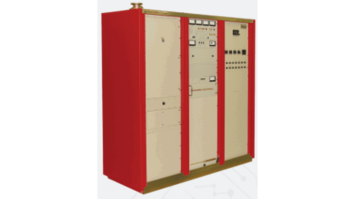In this special-edition Tech Tips, John Bisset shares five pieces of advice to help radio engineers stay warm and keep prepared during the colder months.

In snowy climates, don’t overlook a plastic sled to haul equipment from your vehicle to the transmitter building.
The plastic sleds are inexpensive and can be kept in the transmitter building until needed.
Dress for the Weather
A few years ago, while living in New Hampshire, I discovered flannel-lined and fleece-lined blue jeans. Stanley, the tool company, as well as Eddie Bauer and Wrangler all manufacture these.
They really keep you warm when you are in a cold transmitter building or exposed to the elements repairing an antenna on a rooftop.
Got my transmitter to keep me warm
One of the benefits of tube transmitters in the winter was the heat they exhausted. The efficiency of today’s solid-state transmitters make them poor transmitter building heaters.
The big box stores like Lowe’s and Home Depot sell propane heaters that screw onto a propane cylinder, shown below.
They are compact yet a great source of heat; and since the cylinder can be carried anywhere, their use is limitless. Just remember, if using these indoors, to keep a door open for ventilation.

Lock thaw

Frozen locks can be frustrating. The Boeing Corporation searched for a good moisture displacing lubricant and finally developed their own. Boeshield™ T9 provides waterproof lubrication and is used on many of the critical moving parts of Boeing jets.
The compound also protects against rust and corrosion. A spritz into a lock and then working the key to lock and unlock will guard against locks seizing in winter cold.
T9 can be purchased from Amazon, as seen in the figure to the right.
Pays to be prepared
You only need to be snowbound in a transmitter building once to learn to appreciate simple creature comforts. Put together a locking plastic bin holding:
- Bottled water
- Several protein/energy bars
- A small container of peanut butter
- A knife
- A toothbrush and toothpaste
- A roll of toilet paper and paper towels
- A foil thermal blanket
This can be a lifesaver. You’ll want to make suer the bin or tub locks to discourage scavengers.
If your site has a gasoline or diesel generator, make sure you have a couple of “jerry cans” with which to transport fuel.
Inclement weather can prevent regular fuel deliveries and if the weather forces you into emergency generator operation, YOU may be the fuel caddy. Clearly mark the fuel type on the fuel cans so if you dispatch someone else to fill the cans, the correct fuel is used.
One of the most frustrating things is to have a flashlight with a dead battery. If you have an emergency flashlight, remove the batteries so they won’t corrode, and keep them in a zipped bag. Packing a few extra batteries can’t hurt.
If you’re over 50, you may be on medication of some type. NEVER leave for a transmitter site without a travel pack of your meds.
Workbench submissions are encouraged and qualify for SBE recertification credit. Email johnpbisset@gmail.com.






